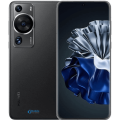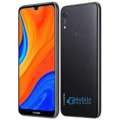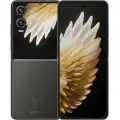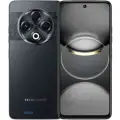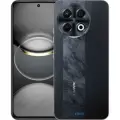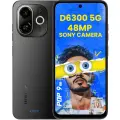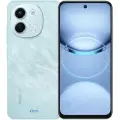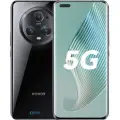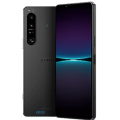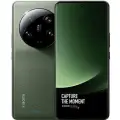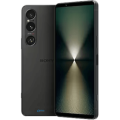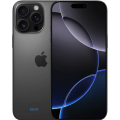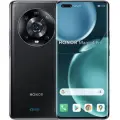Huawei MediaPad M5 8
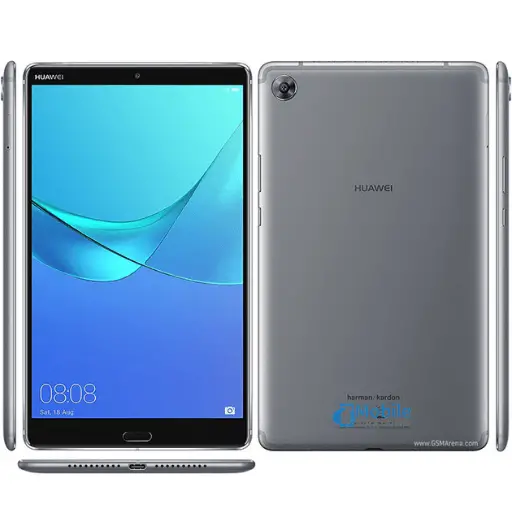

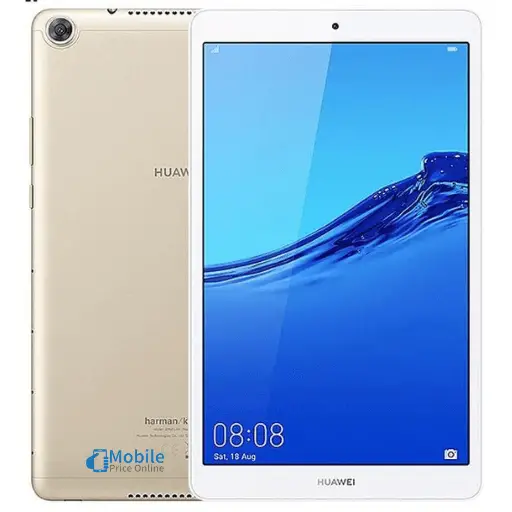

-
Released: 2018, April
-
OS: Android 8.0; EMUI 8
-
Display: 8.4" 2560x1600 pixels
-
Camera: 13MP 1080p
-
RAM: 4GB RAM HiSilicon Kirin 960
-
Battery: 5100mAh Li-Po
Full Specifications and Price in Bangladesh
General Info
| Announced | 2018, February |
| Status | Available |
| Brand | Huawei |
| Model | Huawei MediaPad M5 8 |
| Color | Space Gray, Champagne Gold |
| Made by | China |
| Price | BDT. 32,500 |
Network
| Technology | GSM / HSPA / LTE |
| 2G Bands |
GSM 850 / 900 / 1800 / 1900 |
| 3G Bands |
HSDPA 850 / 900 / 1900 / 2100 |
| 4G Bands |
1, 3, 5, 7, 8, 20 |
| 5G Bands | N/A |
| Speed | HSPA 42.2/5.76 Mbps, LTE-A (3CA) Cat12 600/150 Mbps |
| GPRS GPRS (General Packet Radio Service) is a packet oriented mobile data service on the 2G and 3G cellular communication system's global system for mobile communications (GSM), Generally, GPRS is used for the purpose of wireless data transfer, such as sharing pictures and videos or browsing the Internet via a mobile phone connection. | |
| EDGE EDGE (Enhanced Data GSM Environment) is a wireless network technology generally considered the next step in the 2G network offers data transfer rates up to four times faster than ordinary GSM networks, Generally, EDGE is used for the purpose of wireless data transfer, such as sharing pictures and videos or browsing the Internet via a mobile phone connection. |
Body
| Dimensions | 212.6 x 124.8 x 7.3 mm (8.37 x 4.91 x 0.29 in) |
| Weight | 316 g (11.15 oz) |
| Build | Glass front, aluminum back, aluminum frame |
| SIM SIM (Subscriber Identity Module) is a small card that contains mobile network subscriber's account information. This allows the phone using the card to attach to a mobile network. The SIM card is most commonly associated with GSM and UMTS mobile networks. Moving a SIM card from one phone to another allows a subscriber to switch mobile phones without having to contact their mobile network carrier. SIM cards can also be used by a phone to store limited amounts of data, such as phone numbers and text messages. | Nano-SIM |
Display
| Type Design Type called form factor refers to a mobile phone's size, shape, and style as well as the layout and position of major components of phone. There are three major form factors seen in mobile phones => bar phones, folding phones and sliding phones. | IPS LCD |
| Size | 8.4 inches, 204.6 cm2 (~77.1% screen-to-body ratio) |
| Resolution | 2560 x 1600 pixels, 16:10 ratio (~359 ppi density) |
| Refresh Rate | 60 Hz |
| Protection | Tempered Glass |
| Pixel Density Pixel Density (PPI) is refers to the concentration of pixels on a particular display, measured in pixels per inch (ppi). Pixel density is calculated by dividing the diagonal pixel resolution of a display by its diagonal size, higher pixel density better display quality. | 359 ppi density |
| Multitouch | |
| Features |
MP3/WAV/Flac player MP4/H.264 player Document viewer Photo/video editor |
Platform
| Operating System OS => Every computer system run on a base software called Operating System (OS). Operating System controls all basic operations of the computer (such as smartphone, PDAs, tablet computers and other handheld devices). The Operating System allows the user to install and run third party applications (apps), apps are used to add new functionality to the device. | Android 8.0 (Oreo), EMUI 8 |
| Chipset Chipset is a group of integrated circuits designed to perform one or a more dedicated functions, often with real time computing constraints, Popular smartphones are equipped with more advanced embedded chipsets that can do many different tasks depending on their programming. | Kirin 960s (16 nm) |
| CPU CPU (Central Processing Unit) mostly known as processors, CPU processes instructions in order to carry out certain functions that make your device operate properly. Processors are often described as the brain of computers, smartphones and tablets, Smartphones and tablets rely on processors to carry out their every task, Processors are an incredibly important factor in selecting any type of computing device, including your smartphone. | Octa-core (4x2.1 GHz Cortex-A73 & 4x1.8 GHz Cortex-A53) |
| GPU GPU (Graphics Processing Unit) is a single-chip processor designed to rapidly manipulate and alter memory to accelerate the creation of images in a frame buffer intended for output to a display, This includes things such as lighting effects, object transformations, and 3D motion. | Mali-G71 |
Memory
| Card Slot Memory Card Slot is a special slot for inserting a memory card. Memory cards allow you to expand the phone's built-in memory, A memory card (sometimes called a flash memory card or a storage card) is a small storage medium used to store data such as text, pictures, audio, and video, for use on small, portable or remote computing devices such as mobile phones, mp3 players, digital cameras. | microSDXC (dedicated slot) |
| RAM RAM (Random Access Memory) is a type of computer memory that can be accessed randomly, any byte of memory can be accessed without touching the preceding bytes that allows information to be stored and accessed quickly from random locations. RAM is the most common type of memory found in computer systems, smartphones, tablets and other electronic devices. | 4 GB RAM |
| Internal Internal Storage is a data storage space (flash memory) mostly used in smartphones, tablets and other electronic devices where operating system, apps, music, photos, videos, files and other user data Is stored. | 32/64/128 GB |
Main Camera
| Camera Resolution |
13 MP, PDAF |
| Camera Features |
LED flash, HDR, panorama |
| Video Resolution | 1080p@30fps |
Selfie Camera
| Camera Resolution |
8 MP |
| Camera Features |
LED flash, HDR, panorama |
| Video Resolution | 1080p@30fps |
Sound
| Alert Types | Vibration; MP3, WAV ringtones |
| Loudspeaker | Yes, with stereo speakers |
| Audio Jack |
Connectivity
| WLAN | Wi-Fi 802.11 a/b/g/n/ac, dual-band, WiFi Direct, hotspot |
| Bluetooth Bluetooth is a wireless communications technology for exchanging data between mobile phones, headsets, computers and other network devices over short distances without wires, Bluetooth technology was primarily designed to support simple wireless networking of personal consumer devices. | 4.2, A2DP, LE |
| GPS GPS The Global Positioning System is a satellite-based radio navigation system, GPS permits users to determine their position, velocity and the time 24 hours a day, in all weather, anywhere in the world, In order to locate your position, your device or GPS receiver must have a clear view of the sky. | Yes, with A-GPS |
| NFC NFC (Near field communication) is a set of standards for smartphones and similar devices to establish peer-to-peer radio communications with each other by touching them together or bringing them into proximity, usually no more than a few inches. | |
| Infrared port | |
| FM Radio | |
| USB | 2.0, Type-C 1.0 reversible connector |
Features
| Sensors Sensors are electronic components that detects and responds to some type of input from the physical environment. The specific input could be light, heat, motion, moisture, pressure and location, The output is generally a signal that is converted to use in computing systems, a location sensor, such as a GPS receiver is able to detect current location of your electronic device. |
Fingerprint (front-mounted), accelerometer, gyro, proximity, compass |
| Messaging | SMS(threaded view), MMS, Email, Push Email, IM |
| Browser Web Browser => a web browser is a software application used to locate, retrieve and display content on the World Wide Web, including Web pages, images, video and other files, The primary function of a web browser is to render HTML, the code used to design or markup webpages. | HTML5 |
| Java |
Battery
| Battery Type Battery Type => Cell phones run on various kinds of batteries depending on the manufacturer, phone size or shape and features. There are basically four types of cell phone batteries => Lithium Polymer, Lithium Ion, Nickel Metal Hydride and Nickel Cadmium. | Non-removable Li-Po |
| Battery Capacity Battery Capacity is a measure (typically in Amp-hr) of the charge stored by the battery, and is determined by the mass of active material contained in the battery. The battery capacity represents the maximum amount of energy that can be extracted from the battery under certain conditions. | 5100 mAh battery |
| Charging Wireless Charging (Inductive Charging) uses an electromagnetic field to transfer energy between two objects. This is usually done with a charging station. Energy is sent through an inductive coupling to an electrical device, which can then use that energy to charge batteries or run the device. |
18W wired |
| Fast Charging | |
| Wireless Charging |
Huawei Media Pad M5 8: Overview
The Huawei MediaPad M5 8 is a compact yet powerful tablet designed for users needing a high-quality entertainment and productivity device. It features an 8.4-inch 2K display with a 2560 x 1600 pixels resolution, offering crisp and vibrant visuals that are perfect for watching videos, reading, and gaming. Powered by the Kirin 960 processor and 4GB of RAM, the MediaPad M5 8 handles multitasking smoothly, making it a versatile device for both work and play. Additionally, the tablet is equipped with Harman Kardon-tuned stereo speakers, delivering an immersive audio experience.
Price in Bangladesh: The Huawei Media Pad M5 8 is priced around BDT 32,500 to BDT 35,000, positioning it as a premium option in the tablet market.
Pro and Cons
Pros:
- High-Resolution Display: The 2K display ensures sharp and vibrant visuals, which are ideal for media consumption and gaming.
- Solid Performance: The Kirin 960 processor and 4GB of RAM provide smooth performance for multitasking and demanding applications.
- Excellent Audio: The Harman Kardon-tuned speakers deliver rich and immersive sound, enhancing the overall media experience.
- Premium Design: The tablet’s sleek metal build gives it a premium look and feel, making it durable and stylish.
Cons:
- No Headphone Jack: The absence of a 3.5mm headphone jack may be inconvenient for users who prefer wired headphones.
- Limited Software Updates: The device may need the latest Android updates, which could impact access to newer features and security enhancements.
- No Expandable Storage: The lack of a microSD card slot limits the storage options, making storing large amounts of media and apps difficult.
FAQs
1. What is the battery capacity of the Huawei MediaPad M5 8?
- The Huawei MediaPad M5 8 has a 5100mAh battery, offering up to 11 hours of video playback on a single charge.
2. Does the Huawei MediaPad M5 8 support fast charging?
- Yes, the tablet supports fast charging, allowing you to quickly recharge the battery and return to using your device.
3. Is the storage expandable on the Huawei MediaPad M5 8?
- No, the Huawei MediaPad M5 8 does not support expandable storage, so users are limited to the internal storage options.
4. What is the camera setup on the Huawei MediaPad M5 8?
- The tablet features a 13MP rear camera and an 8MP front camera, suitable for capturing photos and video calls.
5. Does the Huawei MediaPad M5 8 support cellular connectivity?
- Yes, a variant of the Huawei MediaPad M5 8 supports 4G LTE, allowing for mobile data connectivity.
Reason to Buy
- Impressive Display: The 2K resolution makes this tablet ideal for those who prioritize visual quality, whether for gaming, streaming, or reading.
- Strong Performance: With the Kirin 960 processor and 4GB of RAM, the tablet easily handles multitasking and resource-intensive apps.
- Superior Audio: The Harman Kardon-tuned speakers provide a rich audio experience perfect for media enthusiasts.
- Sleek Design: The premium metal build gives the tablet a stylish and durable finish, making it stand out from other devices in this price range.
- Long Battery Life: The 5100mAh battery ensures you can use the tablet throughout the day without worrying about recharging.
This content highlights the Huawei Media Pad M5 8’s key features and provides essential information for potential buyers in Bangladesh to make an informed decision.
Videos
Disclaimer Note
We do not guarantee that the information of this page is 100% accurate and up to date.


